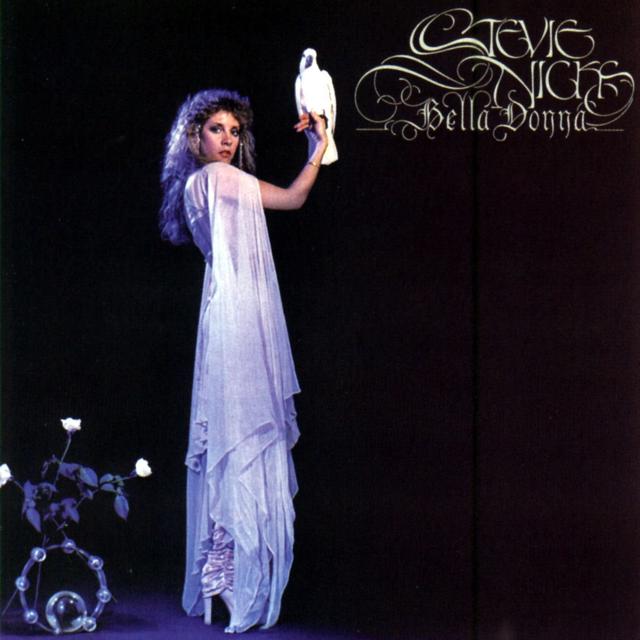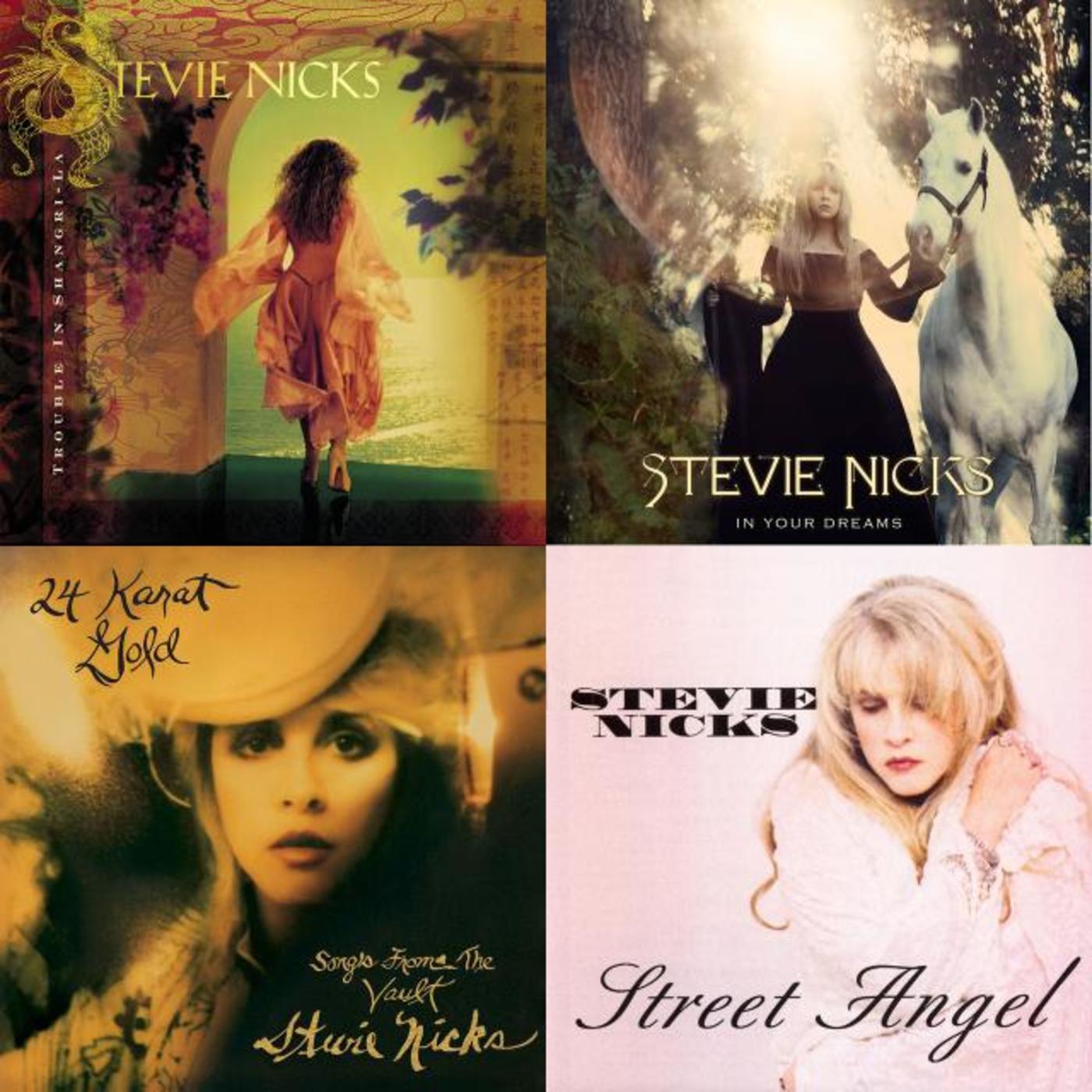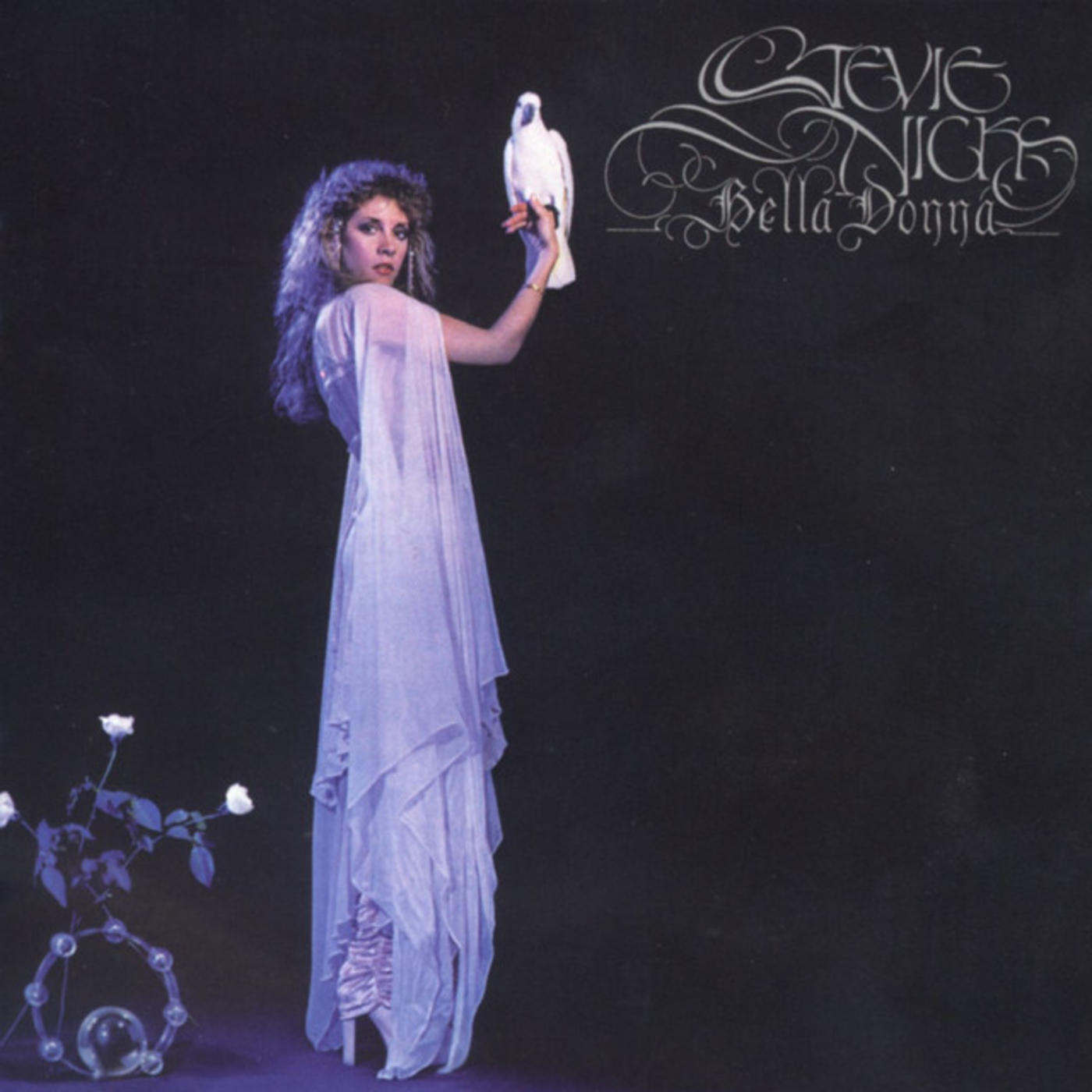July 1981: Stevie Nicks Releases Solo Debut BELLA DONNA

By the fall of 1980, Stevie Nicks needed a break from the relentless Fleetwood Mac machine. It was the arrival of Nicks and guitarist Lindsey Buckingham on the band's eponymous 1975 album that launched Fleetwood Mac into the upper echelons of rock superstardom. The massive success of the 1977 followup, Rumours, and the drama surrounding 1979 double-LP Tusk (and the ensuing tour) was more than enough to push Nicks over the edge. After the Tusk tour wrapped up with a show at the Hollywood Bowl on September 1, 1980, Nicks set her mind to embarking on a solo career.
“In Fleetwood Mac there’s always a chaos,” Nicks said in 2003 (via Loudersound). “It’s not easy for us. It never will be. It hasn’t ever been. Whenever we get back into a room together and start working, we don’t agree on a lot of stuff. And we’ve fought through every single record we have ever made.”
Driving Nicks' desire to make a solo record was a passion to share her songs with the world. Songs that often got lost in the Fleetwood Mac recording shuffle: “When we’d do an album, they’d hear fifteen of my songs and invariably pick the two that were my least favorite,” she once groused. “Some of my favorite songs wouldn’t get used.”
With Jimmy Iovine onboard as producer, Nicks teamed up with her best friends and backing vocalists, Lori Perry and Sharon Celani, along with keyboardist Benmont Tench of Tom Petty's Heartbreakers, and set off on creating a Stevie Nicks solo album.
“We were like Joni Mitchell and Crosby, Stills And Nash, living in this great house and making music,” is how Nicks recalls the sessions. “It was one of those real rock ’n’ roll experiences that you can never forget.”
“It was song after song after great song,” Tench said. “I think she had enough for her first three solo albums and beyond. Lori and Sharon were so instinctive and so intuitive. They were all so tuned in to each other. At the drop of a hat they’d break into a cappella versions of old songs like 'Chapel Of Love.' They loved each other and loved to harmonize. They stood behind me at the piano, and when I heard their three voices together it was just: ‘Wow’, goosebumps.”
Iovine assembled an all-star cast of musicians to work on the record, including E Street Band pianist Roy Bittan, Elton John’s guitarist Davey Johnstone, Linda Ronstadt’s drummer Russ Kunkel, bassist Lee Sklar and guitarist Waddy Watchel.
“We recorded all the songs essentially live, with the whole band cutting at the same time, and Stevie, Lori and Sharon singing with us on the floor," Tench explained. "We captured a beautiful feel. The ambience of the studio was gorgeous, aesthetically pleasing. Stevie brought the ambience, not necessarily in items from her house, but just the spirit. The same mood that was in her house made it to the vocal booth.”
The first sounds of Bella Donna arrived in July 1981 with the release of lead single "Stop Draggin' My Heart Around," a duet with Tom Petty and the Heartbreakers. The song came to be after Petty wrote a song --"Insider"-- for Stevie Nicks at her request. However, Petty later decided he liked the song too much to give it away, and recorded it with the Heartbreakers. For his part, Petty offered up a couple of other tunes to make up for it. After Nicks and Iovine worked up a version of "Stop Draggin' My Heart Around" with Nicks' vocals over the Heartbreakers' music, a hit single was born. Nicks, however, wasn't excited about putting a duet on her solo debut, and stormed out of the studio at the idea.
“Then I stormed back in and said: ‘Okay, you’re absolutely right. I’m sorry for being so bitchy about this, it’s just that I’m so protective of my songs.’ And because of that song, I have a solo career to this day.”
The track climbed the charts to peak at #3 on the Hot 100 for the week of September 5, 1981. FUN FACT: "Stop Draggin' My Heart Around" still stands as Nicks' highest-charting single in America.
The song was such a hit that the label--Nicks’ own Modern Records, a subsidiary of ATCO--wouldn’t get around to releasing a second single until October 1981. With the success of the Nicks/Petty duet still fresh, “Leather and Lace,” featuring Nicks trading verses with Don Henley of the Eagles, served as single number two. Another radio and chart hit, "Leather and Lace" peaked at #6 on the Hot 100 in January 1982.
Nicks went three for three when third Bella Donna single, "Edge of Seventeen," was another smash for the Fleetwood Mac singer gone solo. Released in February 1982, the guitar-powered rock song soared like the lyrical white-winged dove up the charts, just missing the top 10 with peak showing at #11 for the week of April 17, 1982. The #1 song in America that week: Joan Jett & the Blackhearts, "I Love Rock 'n' Roll."
Bella Donna, released July 27, 1981, more than proved that Stevie Nicks didn't need the protection of a major rock group to succeed. Given the string of hit singles, the album stormed the charts, climbing the Billboard 200 to snatch the #1 spot for the week of September 5, 1981.
“I learned a long time ago never to expect. Because I think that was something that was instilled in me when I was really small. Don’t expect anything," Nicks told Redbeard in 2021. "Not that you can’t be confident about it. But just don’t expect the greatest things and then you won’t be disappointed. And then if great things do happen, you’ll be much more excited and happy about it... what if it isn’t? Then you’re devastated. And I don’t particular love being devastated, so I just thought a long time ago that I would take in my stride whatever happened, especially with my solo records.
"I’m really trying to do a whole lot more than sing songs to people," Nicks shared. "I’m trying to give out a little experience to people, I think. Maybe run by them, in a fantasy sort of way, experiences that I’ve been through that may save them a little bit of time. A little bit of hard time. Just help a little bit. I have to really feel that the song itself is important because I feel long after the singer is gone, and the songwriter is gone, that the song will remain."


